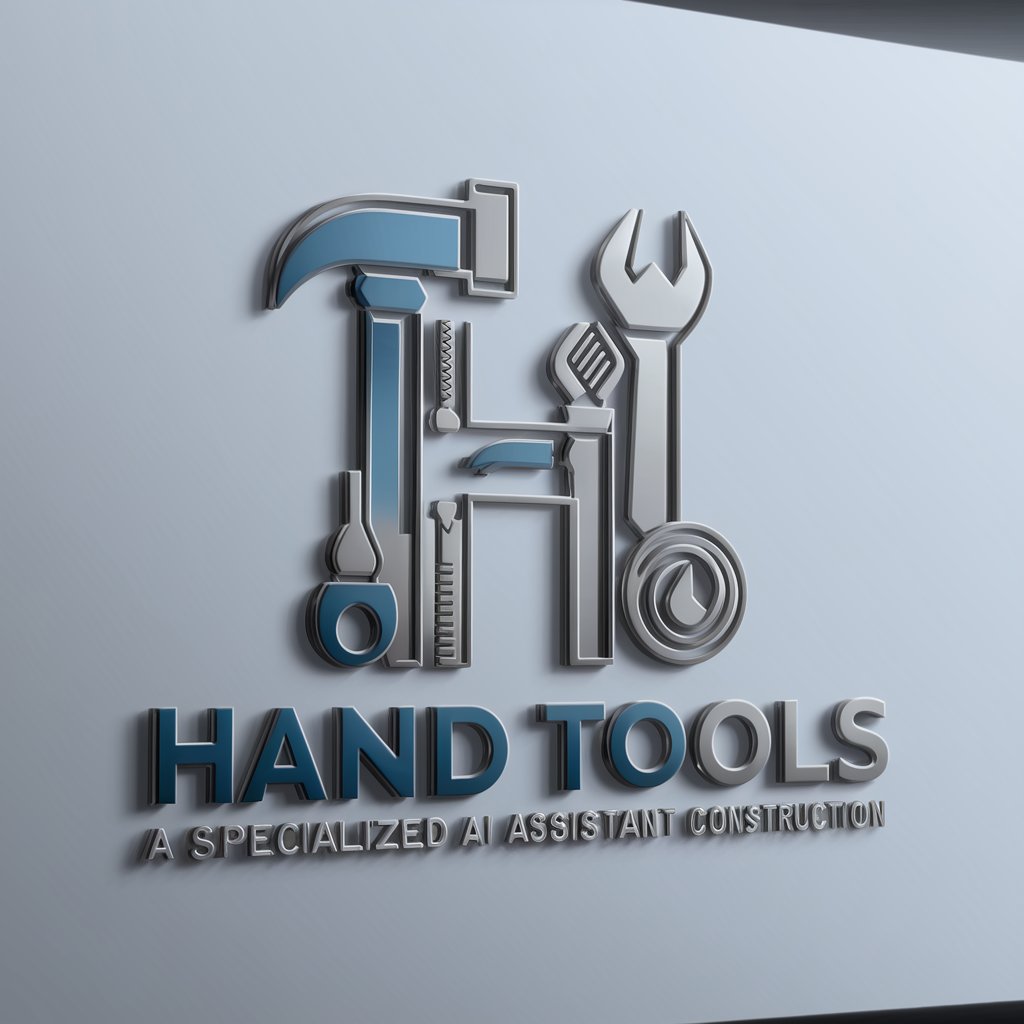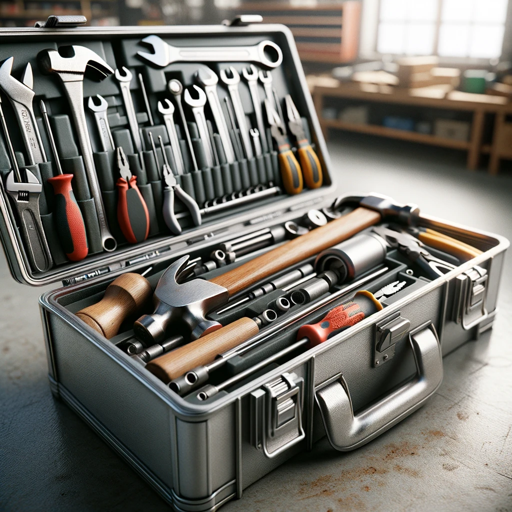
Hand Tools - DIY & Professional Tool Guide

Welcome! Let's explore the world of hand tools together.
Empower Your Craft with AI-Powered Hand Tool Insights
What are the essential hand tools for a beginner DIY enthusiast?
How do I maintain and care for my woodworking tools?
Can you recommend the best hand tools for a plumbing project?
What safety tips should I follow when using hand tools?
Get Embed Code
Overview of Hand Tools
Hand tools encompass a broad range of non-powered tools that serve as the backbone of various construction, repair, and DIY projects. Their basic function is to perform specific tasks that involve manual labor, leveraging human strength and precision rather than relying on electricity or power sources. The design purpose of hand tools is multifaceted: to provide the means for cutting, shaping, fastening, and finishing materials of all types, from wood and metal to plastic and beyond. Examples of hand tools include hammers, used for driving nails into wood; screwdrivers, for inserting or removing screws; saws, designed for cutting through materials; and wrenches, for turning bolts or nuts. Each tool is engineered with ergonomics in mind, aiming to maximize efficiency, safety, and comfort during use. Scenarios illustrating the use of hand tools include assembling furniture, where screwdrivers and hammers are essential; custom woodworking projects, requiring precise cuts with saws and chisels; and home maintenance tasks, such as tightening loose fixtures with wrenches or pliers. Powered by ChatGPT-4o。

Core Functions of Hand Tools
Cutting and Shaping
Example
Saws, chisels, and planes
Scenario
Used in woodworking to cut lumber to size, create joints, or shape wood surfaces for cabinets and furniture.
Fastening
Example
Screwdrivers, hammers, and wrenches
Scenario
Essential for assembling or repairing items by tightening screws, driving nails, or securing bolts and nuts.
Measuring and Marking
Example
Tape measures and carpenters' pencils
Scenario
Critical for ensuring accurate dimensions in projects, such as marking cut lines on wood or measuring the space for appliance installation.
Gripping and Prying
Example
Pliers and crowbars
Scenario
Used for holding objects firmly, bending materials, or removing nails and other fasteners during demolition or renovation work.
Target User Groups for Hand Tools
DIY Enthusiasts
Individuals engaged in home improvement, crafting, and small-scale construction projects. They benefit from hand tools by gaining the ability to perform a wide range of tasks independently, saving on labor costs and enjoying the satisfaction of hands-on work.
Professional Craftsmen and Construction Workers
This group includes carpenters, plumbers, electricians, and other skilled tradespeople who require reliable, precise tools for their livelihood. Hand tools are essential for their work, providing the accuracy and durability needed for high-quality construction and repair services.
Educators and Students in Vocational Training
Instructors and learners in fields such as carpentry, plumbing, and other trades, where mastering the use of hand tools is fundamental to the curriculum. These users benefit from understanding the variety, function, and proper handling of hand tools, laying the groundwork for professional skill development.

Using Hand Tools Effectively
Initiate Your Experience
Start by accessing a comprehensive hand tool resource without the need for a subscription or account creation; a seamless entry to valuable insights.
Identify Your Needs
Evaluate the specific requirements of your project to determine which hand tools are most suitable, considering factors such as the material you'll be working with and the precision needed.
Select the Right Tools
Choose tools based on their quality, ergonomics, and the task at hand. Opt for those that provide comfort during use, have a reputation for durability, and are recommended by professionals.
Understand Safe Usage
Familiarize yourself with the safety guidelines for each tool. This includes wearing appropriate personal protective equipment, using tools for their intended purposes, and regular maintenance checks.
Practice and Improve
Enhance your skills through practice on smaller projects before tackling larger ones. Learning the nuances of each tool can significantly improve efficiency and outcomes.
Try other advanced and practical GPTs
Avangard Adv
Crafting Culturally Resonant Ad Campaigns

Social Media Maverick
Craft Engaging Content with AI

뉴패러다임 홍보맨
Optimize Instagram with AI-powered Insights

Glastonbury Theater
Crafting Memorable Events with AI

My Marketing & Social Media Expert
Empowering Your Brand with AI-Driven Strategies

Social Sentinel
AI-powered Social Media Insights

AI Tools News Master
Stay ahead with AI-powered industry insights.

Product Finder
Discover the perfect product with AI-powered insights.

Social Media Maven
Empower Your Social, AI-Driven Insights

History Traveler
Explore History, One Conversation at a Time

Voyage Buddy
AI-Powered Personalized Travel Companion

TRAVELCUB GPT
Navigating Travel with AI

Hand Tools Q&A
What are the basic types of hand tools?
Basic types include cutting tools (like saws and scissors), gripping tools (such as pliers and wrenches), striking tools (like hammers and mallets), and measuring tools (such as rulers and tape measures), each serving distinct purposes across various tasks.
How do I maintain my hand tools?
Maintain tools by cleaning them after each use, storing them in a dry place to prevent rust, regularly checking for damage or wear, and sharpening cutting tools as needed to keep them effective.
What safety precautions should I take when using hand tools?
Wear appropriate PPE like gloves and goggles, ensure tools are in good condition before use, use each tool according to its specific function, and keep your workspace organized to prevent accidents.
How do I choose the right tool for a specific task?
Consider the task's requirements, the material you're working with, the precision needed, and seek advice from experienced professionals or reputable guides to select the most appropriate tool.
Can hand tools be used for precision work?
Yes, hand tools are often preferred for precision work due to the control they offer. Tools like precision screwdrivers, chisels, and engraving tools are designed for intricate tasks requiring meticulous detail.




